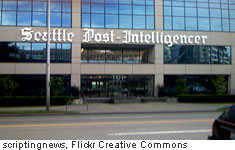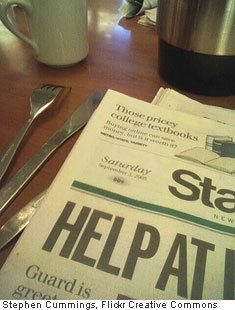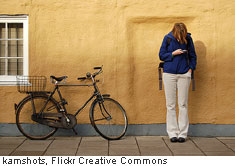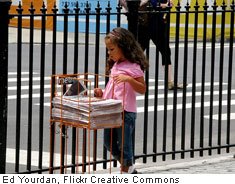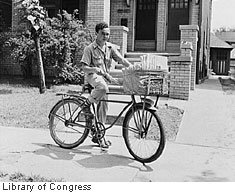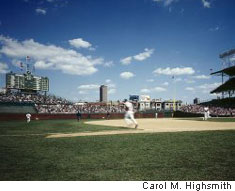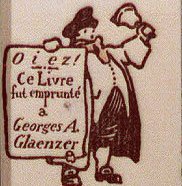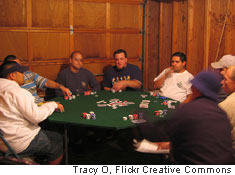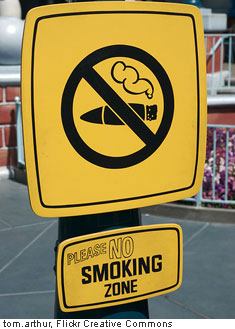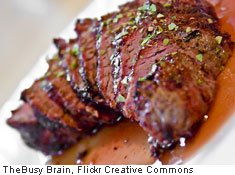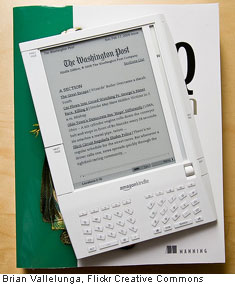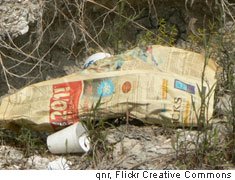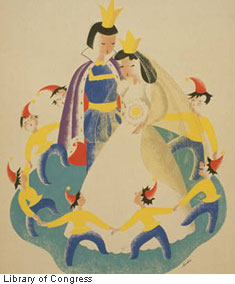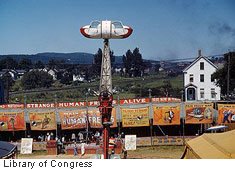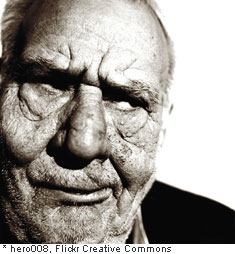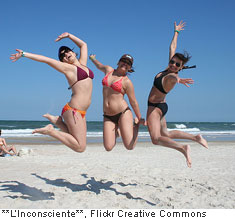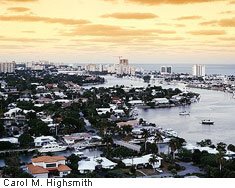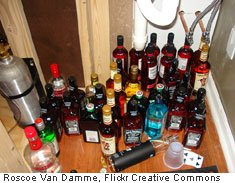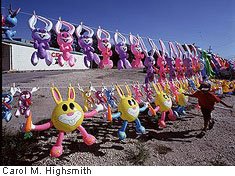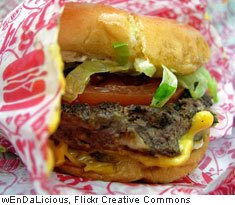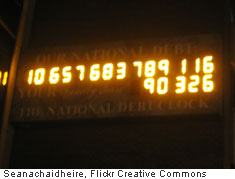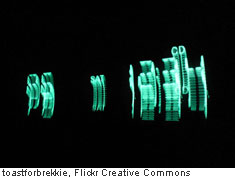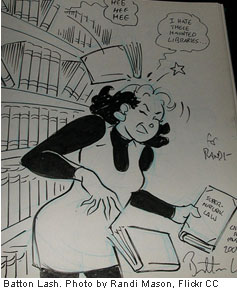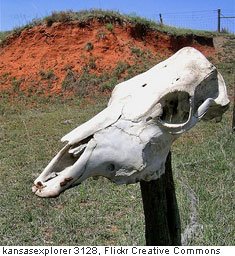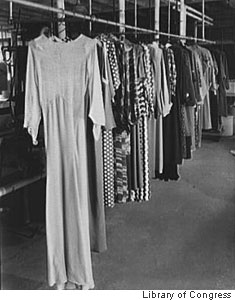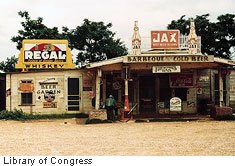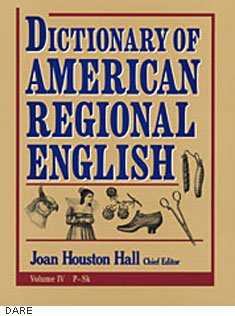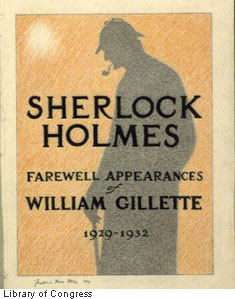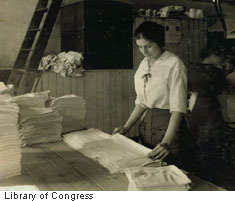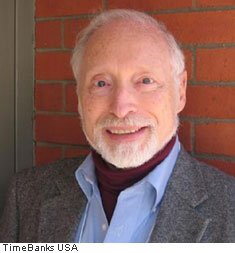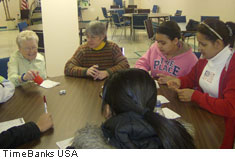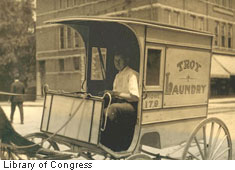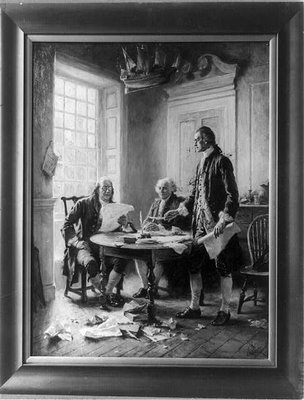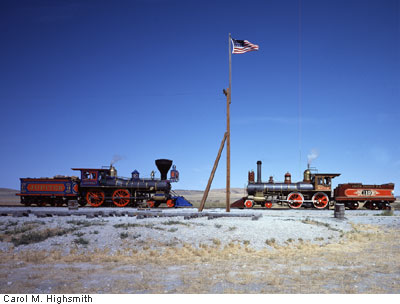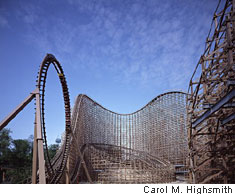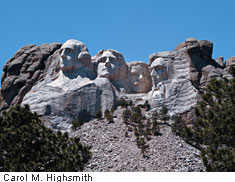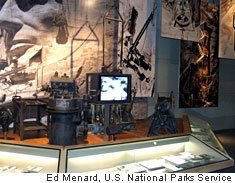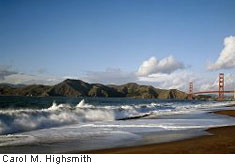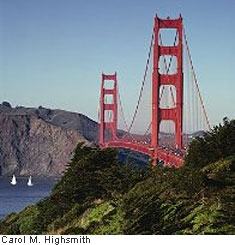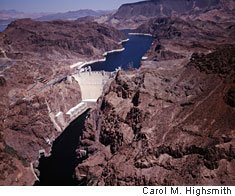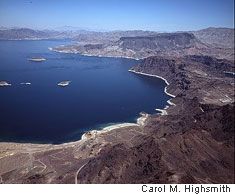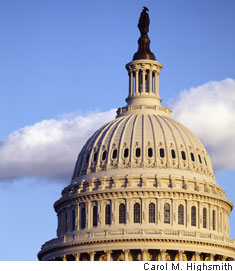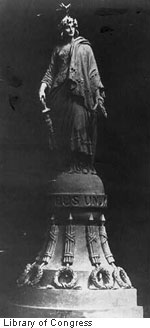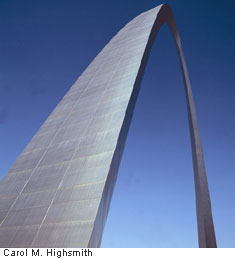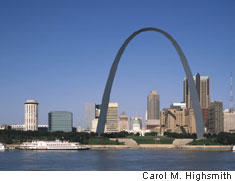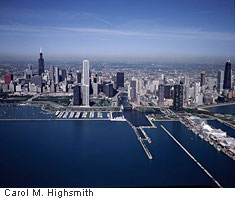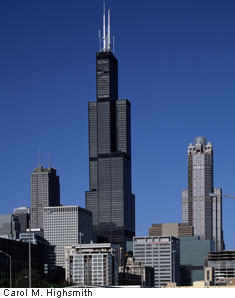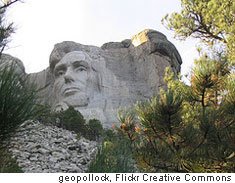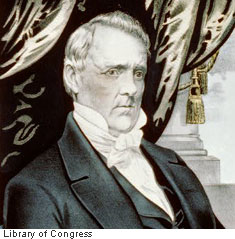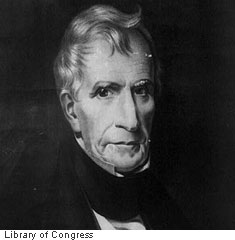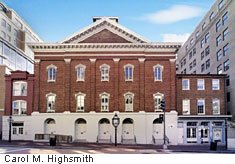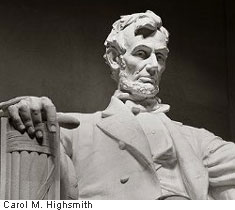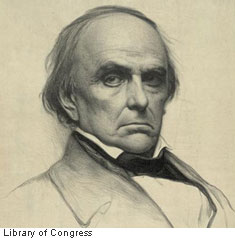Less than a year ago, I was privileged to interview John Hope Franklin, who was 93 but retained the sharp mind and sunny outlook that had marked his entire bountiful life. He was the distinguished scholar and pioneer of African-American studies who helped Americans rediscover, and rethink, the impact of slavery on the nation’s history.
Upon his death in late March, VOA recast most of that interview as a Franklin tribute. You may have missed it, and I want to share parts of it so that you can get the measure of this remarkable, inspirational man.
 |
| John Hope Franklin was a quiet man with steel resolve and a view of the human condition that wmbodied his name: hope |
“John Hope Franklin, the son of the South, has always been a moral compass for America – always pointing us in the direction of truth,” President Bill Clinton said in 1995 as he awarded Franklin the Presidential Medal of Freedom, the nation’s highest civilian honor.
In 1921, as a 6-year-old boy in an impoverished, all-black Oklahoma town, Franklin, the grandson of a slave, watched in terror as white rioters torched African-American neighborhoods in nearby Tulsa and burned his father’s law office to the ground.
But he would carry no bitterness or hatred into adulthood. Rather, he was suffused with determination to learn, to excel, to illuminate the full and true story of his people. Franklin did so well at historically black Fisk College in Nashville, Tennessee, that he was admitted to graduate school at the acclaimed Harvard University. But the nation was in the grip of the Great Depression. Neither he nor his family could afford the tuition that Harvard demanded. These were agonizing moments until his mentor, a Fisk history professor, intervened.
“A young white man – I was 20 years old; he was 32 – went downtown and borrowed $500 and put it in my hand and said, ‘Money will not keep you out of Harvard,’ Franklin told me. “And he sent me off to Harvard the next day. Well, if that was a low point, it was also a high point, too, for I was back on track.”
 |
| Somehow it’s not surprising that Franklin loved orchids, one of nature’s gentlest and most fragile flowers |
On track to one day write the most acclaimed account of the enslavement of African-Americans in the Old South. The book, From Slavery to Freedom, would sell more than three million copies. It shattered the image of complacent, dimwitted slaves. And it described slave rebellions and little-known achievements of free black men and women – even in the hateful South.
It was Franklin whose research at the Library of Congress had helped civil-rights lawyers convince the U.S. Supreme Court to outlaw segregation in the nation’s public schools a decade earlier. And it was he and other historians who were escorted to the head of a voting-rights march from Selma to Montgomery, Alabama, in the heart of the segregated South and in the midst of an angry crowd.
“To be very frank, I was frightened out of my wits,” Franklin told a reporter. But he and the others marched steadfastly past the full-throated animus, and the spittle.
“Where does this depth of hatred of black people come from?” I asked him.
“It’s a part of the rationalization or justification for slavery. You can’t enslave your equals,” he replied. “So you’ve got to make your equals into something else – make them appear to be inferior and appear to deserve enslavement.”
Franklin taught history at several institutions, including Brooklyn College in New York, where he arrived as department chairman to find that all 52 people reporting to him were white.
“I had to remind myself that they were not like me in appearance. But so far as their human qualities were concerned, they could be just as I was. I could be just as they were.”
Consider that last sentence one more time before we move on: “I could be just as they were.”
“I taught for nearly 70 years,” John Hope Franklin told me. “And I would like my students to take up where I left off and to carry on the fight to establish history as a powerful force for good – a constructive force to rectify the ills of our society – to change the world, as it were.”
Franklin rejected the label “black historian” – insisting instead that he was a historian whose writing about all Americans has given substance to the black experience. In the same vein, he took some issue with the national practice of setting aside a single month, February, as “Black History Month.”
Blacks, said John Hope Franklin, are part of American history every month of every year.
 |
| The John Hope Franklin Center for Interdisciplinary and International Studies at Duke University “celebrates the spirit and scholarship” of the renowned historian |
And here is one more, telling testament to his character, as told in the Washington Post by Walter Dellinger, his longtime colleague on the Duke University history faculty.
“He was no Pollyanna. He knew, as my son Drew once wrote, that we are still always crossing that bridge from Selma to Montgomery. But John Hope always looked at the state trooper blocking the bridge, the figure standing in the way of freedom, and saw there another child of God.”
 |
| Three marches from Selma, Alabama, to the state capital, Montgomery, in 1965 marked an emotional high point in the struggle for equal rights for all Americans |
Imagine enduring the bile that day and staring at the signs: “Coonsville U.S.A.” and “Nigger Go Home.” Perhaps his mind’s eye saw again the flames consuming his father’s office or his mother’s apron behind which he had hid that childhood day. Surely, too, there were visions of the attack dogs and fire hoses loosed on African Americans elsewhere in Alabama.
There was no mistaking the menace in the baton brandished by the white trooper who blocked his path. Yet he found it in his heart to see before him “another child of God.”
It is that hand across the racial divide, I suspect – more even than his great book and his wise teachings – that the world will long and sorely miss about John Hope Franklin.
Double Dare You
John Hope Franklin and many others risked their lives for a just cause.
Others do so for . . . well, I’m not sure I can tell you exactly what for.
 |
| There’s a 2.3-meter bronze statue of Sir Edmund Hillary that looks up at Mount Cook – New Zealand’s highest mountain and one of the intrepid climber’s favorite peaks |
They are what the Chicago Tribune once called “risk addicts” –people who have gone far beyond the British mountaineer Edmund Hillary, who famously explained in 1923 that he intended to climb Mount Everest, the world’s highest mountain, “because it’s there.”
You’ve seen these thrill seekers? daredevils? idiots? jumping off bridges while tethered to a springy cord that hurtles them a few meters short, if they’re lucky, of a canyon floor. They’re the folks who attempt to leap those same canyons, or rows of cars, or rings of fire in souped-up hot rods or cycles. They’re the snowboarders who zig-zag past lovely, unmovable fir trees at breakneck speed, the big-wave surfers, and the lion tamers, and the climbers of sheer ice as well.
 |
| Brendan Reals took this photo of a brave (or foolhardy) ice climber, a day after he had put down the camera and made the climb himself |
Come to think of it, Carol’s assistant, Brendan Reals, whose stunning landscape photos you sometimes see here, is an avid ice climber! And a mountaineer and back-country hiker. The steeper the trail the better, back into places where real bears have real cubs and real fangs. Brendan would much rather lug a camera to the top of Alaska’s Mount McKinley than shoot up at it. Why? Not because it’s there, and not for the “rush” of cheating death, he tells me, but for the challenge of succeeding and the satisfaction of overcoming his fear.
 |
| This base jumper doesn’t need skis since there’s no snow on the cliff and since he’s simply going to leap into the void rather than glide down for “takeoff” |
Brendan notes that just last week, 39-year-old “base jumper” Shane McConkey died in an accident while filming a movie in Italy. Base jumping, a sport that McConkey helped invent, involves skiing off a ledge and into an abyss in a “birdman” wingsuit, tossing off one’s skis, then deploying a parachute and drifting serenely to earth. Only this time, in Italy, one ski did not come loose, and McConkey spun wildly to his death. Brendan believes that he died, if not happy, certainly doing what he loved. While he lived, “Shane McConkey threw himself headlong off a mountain and into life,” as a Canadian alternative online newspaper put it.
“Some say brain chemistry causes a few to leap toward rather than avoid danger,” the Tribune’s Charles Duhigg wrote some years ago. “Others say daredevils are programmed by genes and childhood.”
Sure, blame Sigmund Freud or their mothers!
“As they jump off the bridge, their bodies start producing chemicals that are just like opiates,” Jay Holder, president of the American College of Addictionology & Compulsive Disorders, told the Trib. (I’m not kidding about the “addictionology” part of the title.) “It’s just like if someone stuck a needle in their arm with heroin. There is no difference in how they feel. It’s the same uncontrollable addiction.”
And here’s something curious that Tribune reporter Duhigg uncovered:
 |
| Think about it: Only two things separate this bungee jumper from a grisly death: a cord that’s JUST the right length short of the earth, and an ankle harness. Fun, right! |
When most people are terrified and it’s “fear response,” flight-or-fight time, a powerful adrenaline rush kicks in. This happens to risk addicts, too, except that the adrenaline has quite the opposite effect: it calms them down, makes them feel “more ‘normal.’” Duhigg quotes a jumper who quit – sold every bit of paraphernalia he owned – after nine friends died jumping off bridges and canyon ledges within fourteen months. But he quit only because his girlfriend said she was outta there if he didn’t. Still, the jumper told the Tribune, “this is something I need to do.”
Sounds like a compulsion to me, though I only play a psychologist on the radio.
True risk addicts apparently try things in large measure just because they’re new. Then they quickly grow bored and move on to something else. A skydiver who jumps for the rush, not the panoramic scenery, won’t leap out of a slow-moving plane with full parachute time after time after time. He or she wants new challenges: piggybacking with another diver, perhaps, or tumbling ever closer to the earth – and death – before pulling the ripcord.
 |
| All the people on the left seem to be smiling as this roller coaster dips earthward. Those on the right display the look of sheer terror. I love coasters but fall into the “terror” group |
We all have levels of acceptable risk. Mine, and probably yours, are pitifully low. As far as I’m concerned, “near-death experiences” aren’t something one elects to try! Maybe we’ll drive faster than we should on the highway – just the 12 or so km/h over the limit that we think is the threshold beyond which the patrol will pull us over. We’re most certainly not excited by the thought of, say, roaring down a dragstrip at 530 km/h. I’ll test the sickest roller coaster. Carol won’t set foot in the kiddie cups. Brendan would probably ride the “Beast” coaster standing up if he could get away with it.
Analysts of the nation’s recent economic upheavals pin some of the blame on risk-addicted traders of derivatives and other treacherous financial instruments. They risked their high-riding lifestyles, if not limbs, with every trade. And many of them lost.
Risk-takers “only know they must continue to beat the odds and outrun the chance of dying,” according to a Web site for something called the “Optimal Life Center.” “They are not aware of the danger to themselves and are oblivious to the threat to others, loved ones and/or strangers,” one article asserts. “Frequently the only way that risk takers or thrill seekers come into recovery is through grave injury. When the person has ridden the razor’s edge too close – resulting in injury, the death of someone else or the loss of a job or a family — then reality hits home making the opportunity for change.”
 |
| Just a little harmless, heart-pounding, death-defying, fate-tempting exercise |
Is risk-taking to the brink of death’s door some sort of “performance art” – an ego trip and a high, all in one? Students of this addiction say no, not usually. There’s a deep desire to stand out, but not much of a need to win or defeat others. That makes the “extreme sports” different from even the most violent competitive ones.
Save for the late Evil Knievel and other stunt riders of the world, people tend to take fewer and fewer risks as they age. We’re soon disabused of the “I’m going to live forever” certainty of youth.
 |
| Meet Mr. Mouse, risk addict |
So what has this exploration of “addictionology” taught us? I don’t know about you, but it’s removed what speck of a thought of deliberately “cheating death” might have survived inside me. Thinking about daredevils and nine dead bungee jumpers and Brendan Reals’s climbs straight up ice-packed Poke-O-Moonshine Cliff in the New York Adirondacks, I may never so much as cross against the corner “DON’T WALK” signal again!
We Have With Us Today . . .
It’s fun to watch kinescopes of old, live television programs just to see the occasional missteps, tangled words, lapses of memory, collapses of stage props, and other gaffes. Today most shows are taped, and the audience never sees these “outtakes.” They’re zapped in the editing process.
There are still some live radio and television broadcasts – mostly newscasts and sports coverage – but even these often employ a seven-second delay system that allows alert producers to wipe out “bloopers” before they reach the air.
Still, a few “doosies” slip in, as my mother used to say. Not only did I hear one the other night, but it lasted several minutes!
 |
| This is more or less the broadcaster’s view of the action at St. Louis Blues’ games. For their play-by-play man one night, though, the excitement would be in the booth! |
I am a big ice-hockey fan, so much so that I sometimes tune into National Hockey League play-by-play on satellite radio. Not just the games of my hometown Washington Capitals, but also contests between other teams. This broadcast originated in St. Louis, where the Blues were playing the visiting Vancouver Canucks.
A break in the action allowed the play-by-play announcer to fit in a short interview. This is common practice in broadcast sports. He introduced his guest as a marketing executive from one of the team’s radio sponsors. The man was there to describe his company’s generous gift to the local children’s hospital.
I wasn’t recording the game and didn’t have a pencil handy to take notes, but the conversation ran into trouble –“went south,” as we sometimes say – right from the start.
Keep in mind that marketing men and women are hired in part for their gift of gab. Give them the chance to tout their products or companies, and normally you can’t shut them up.
The “interview” went something like this. I’ll make up the names:
JOE WRISTSHOT, HOCKEY ANNOUNCER: “We’re pleased that Bill Smithers has joined us here in the booth. He’s the marketing vice president for Jones Grocers here in St. Louis. And Bill, I understand Jones Grocers has just made quite a contribution to the community.”
GUEST, after a slight pause: “Uh . . . yeah.”
JOE WRISTSHOT – obviously taken aback by the brevity of the response: “You’ve sent a big check to Children’s Hospital!!”
GUEST, after an even more uncomfortable interlude: “Yeah.”
 |
| Joe Wristshot was crying the blues, all right |
At this point, you can almost hear announcer Wristshot asking himself, “What’s wrong with this guy? How do I dig out of this?”
But he perseveres:
“Something about asthma research, right, Bill?”
This time the pause is pregnant. GUEST: . . . “I guess.”
Now it’s Announcer Wristshot who’s at a loss for words. It was becoming a “somebody-help-me” moment. I sensed at this point that his producer was telling him something in his earpiece.
ANNOUNCER WRISTSHOT: “Oh my gosh, I’m so sorry. You’re not Bill Smithers!!! You’re Jim Gamble from Greenville, Illinois, one of our great season-ticket holders!!”
GUEST, relieved: “Yup.”
Apparently the Blues invite some of their hard-core fans to come on the air from time to time. This helps efforts to sell season-ticket packages to other listeners. This night, the “lucky” fan is poor Gamble. Already probably terrified to be in front of a microphone and confronted with the most bizarre of questions, he had no idea how to tell Joe Wristshot – let alone his family, his buddies, and thousands of hockey fans who were listening –that he wasn’t grocer Bill Smithers and didn’t know a thing about a hospital gift.
By this time, the announcer’s broadcast partner, the “color commentator,” is chuckling. “Ah, live radio!!”
The guest’s true identity revealed, Wristshot manfully tries to interview him. Gamble the fan proves to be only slightly more articulate than he was as the stammering “grocery guy.” “I thought I’d help you out” by playing along, he tells the announcer.
Finally, mercifully, Wristshot bids Gamble adieu: “You’ve been a real sport, Jim,” the play-by-play man says. “Your next Budweiser is on me.”
But the torment isn’t quite over.
 |
| These two might as well have been Joe’s “guests” during the break in the hockey action |
Almost immediately, down sits the actual Bill Smithers. He and Wristshot and the color guy have a nervous laugh about the faux pas, and the real grocery spokesman does indeed speak robustly about the children’s hospital gift.
As a broadcaster, I certainly sympathized with the flummoxed Joe Wristshot. Here he is, busy watching and describing the action on the ice below when a stranger sits down next to him. There’s no time for more than a quick handshake with the man who, he
 |
| This is how broadcasters caught in an untenable situation feel as their every humiliation is carried to thousands or millions – live |
assumes, is the grocery chain’s p.r. guy. Obviously either Wristshot got his guest lineup out of order, or his producers escorted the wrong fellow into the booth.
I have little doubt that when the game was over, Joe Wristshot was muttering to himself, “Hockey is rough, tough, even violent. But who knew that interviewing was an extreme sport?”
You may have seen reader Kirk’s comment at the end of my last posting, in which I described an unlikely, but intriguing, theory that giving stimulus money to older workers rather than banks or corporations might do more to jump-start the economy. Kirk wrote, “While I admire your hope in a patriotic Retirement, I would hope you would examine the math of Mr. Otterson’s proposal. 40,000,000 people x $1,000,000 is $40 Trillion dollars. Perhaps an edit of your most recent post would be in order.”
I have a really, really lame excuse for this error. Two of them, really, and the second is just as pathetic. None of my calculators, including the ones I could find online, could handle enough digits to give the result of multiplying 40,000,000 x 1,000,000! Yet the answer is obvious if you write it as 40 million times 1 million. But I was too dense to do that. The second excuse is that my trusty editor also tried multiplying all those zeroes and came out with the same $4 million answer. (His calculators didn’t compute that high a figure, either.) Looks like I have two choices for the future: keep the math simple, or ask for Kirk’s help before I post!
(These are a few of the words from this posting that you may not know. Each time, I’ll tell you a little about them and also place them into a cumulative archive of “Ted’s Wild Words” in the right-hand column of the home page. Just click on it there, and if there’s another word in today’s blog that you’d like me to explain, just ask!)
Animus. Hatred bordering on active hostility. Wishing ill will on another.
Color Commentator. The broadcast partner of a sports play-by-play announcer. The “color man” (or woman) is often an ex-athlete who can add depth and analysis to what’s happening in the game.
Flummoxed. Flustered, confused, perplexed by what’s going on around you.
Gift of Gab. Ability to speak knowledgeably and informally, often for long periods of time.
P.R. Short for “public relations.” Many companies and famous people have an army of “p.r. men” (or women) to polish their images.
Steadfast. Holding firm in one’s stand or convictions.

























